On the afternoon of March 14, at the University of Social Sciences and Humanities, Vietnam National University, Hanoi, a presentation on Japanese tea ceremony - the Urasenke tea school took place.
 |
| Since 2019, the University of Social Sciences and Humanities has collaborated with representatives of the Urasenke tea sect to bring many meaningful activities about the art of tea ceremony - a unique cultural feature of Japan. (Photo: Xuan Son) |
The program had the participation of Prof. Dr. Lai Quoc Khanh - Vice President of the University of Social Sciences and Humanities; Ms. Kamitani Naoko - Head of the Information and Culture Department, Embassy of Japan in Vietnam; Mr. Yoshioka Norihiko - Director of the Japan Cultural Exchange Center in Vietnam; Mr. Machita Soryu - Vice President of the Urasenke Tea Ceremony Sect of Japan; Mr. Yamakawa Kaoru - Representative of the Urasenke Tea Sect in Hanoi , and tea people from the land of cherry blossoms.
 |
| Prof. Dr. Lai Quoc Khanh, Vice Rector of the University of Social Sciences and Humanities, delivered the opening speech. (Photo: Xuan Son) |
In his opening speech, Professor, Dr. Lai Quoc Khanh emphasized that the event has special significance as it takes place on the occasion of the 30th anniversary of the establishment of the Faculty of Oriental Studies at the University of Social Sciences and Humanities, Hanoi and the 10th anniversary of the establishment of the Urasenke Association in Vietnam.
| In Japanese, the tea ceremony is called “chanoyu” (茶の湯) or “sado” (茶道), meaning “the way of drinking tea”. This is not just a simple activity of enjoying tea, but is elevated to a cultural feature, a performing art, expressed through the rituals of preparing and making tea. |
Throughout its development, the School has always focused on promoting cultural exchange, enhancing understanding and friendship between nations, a clear demonstration of the good relationship between the School and the Urasenke tea sect.
Since 2019, the University of Social Sciences and Humanities has cooperated with representatives of the Urasenke tea sect to bring about many meaningful activities, helping Vietnamese students and the community better understand the art of tea ceremony - a unique cultural feature of the land of cherry blossoms.
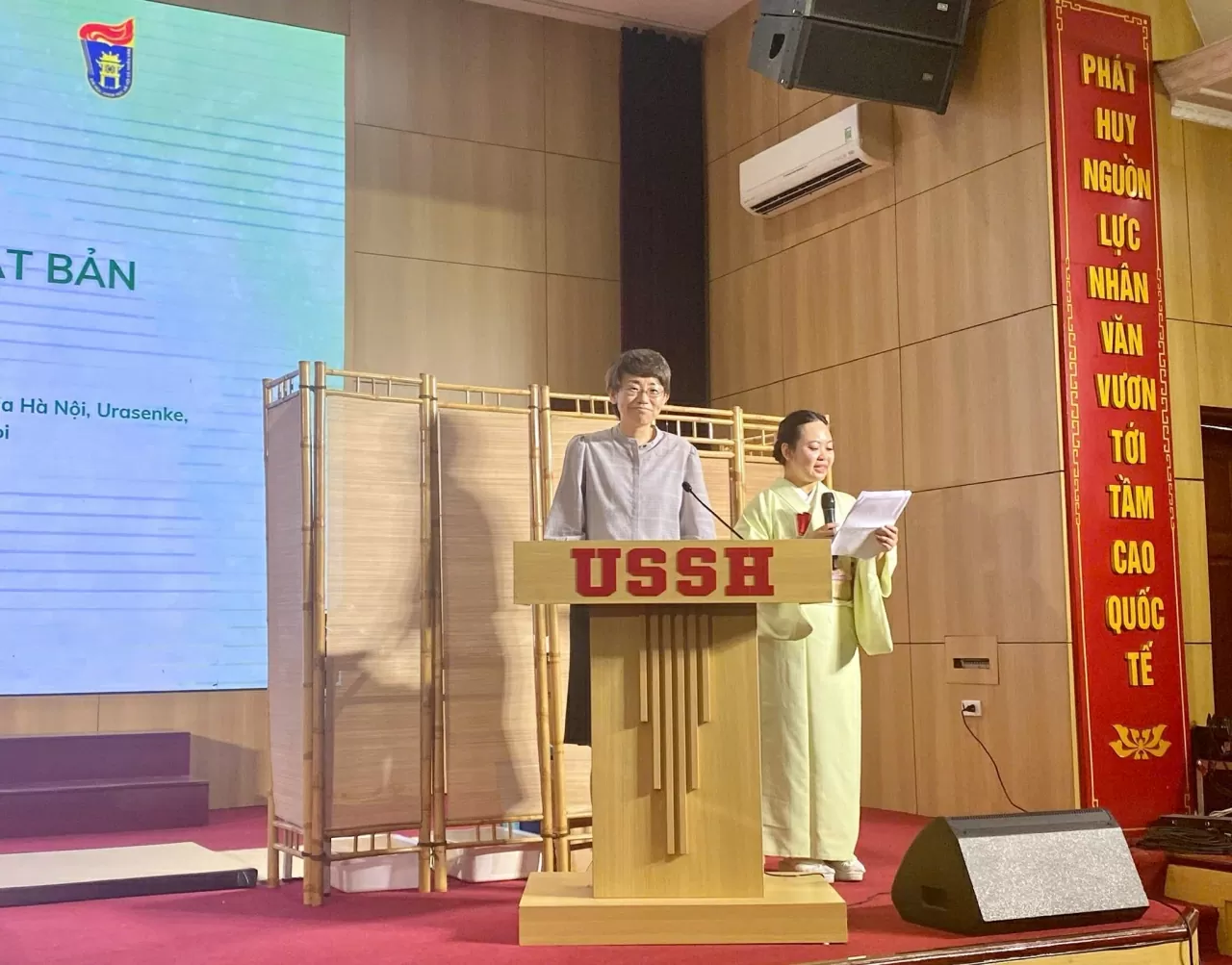 |
| Head of the Culture and Information Department of the Embassy of Japan in Vietnam, Ms. Kamitani Naoko, hopes that cultural exchange activities through tea ceremony will be enhanced. (Photo: Xuan Son) |
According to Ms. Kamitani Naoko, Head of the Culture and Information Department of the Embassy of Japan in Vietnam, tea drinking is a cultural similarity between Vietnam and Japan. Evidence is that Annamese tea pots and cups were used in the Japanese tea ceremony under the founder of the tea ceremony, Sen no Rikyu. Ms. Kamitani Naoko hopes that cultural exchange activities, as well as understanding between the people of the two countries through the tea ceremony, will be further enhanced and deepened.
| Urasenke is one of the main schools of tea ceremony in Japan, with a history of formation and development of over 400 years, accounting for more than half of the total number of tea people in Japan. |
Sharing about the Japanese tea ceremony culture, Mr. Yamakawa Kaoru - representative of the Urasenke tea sect in Hanoi emphasized that the tea ceremony is not simply the art of enjoying tea, but also a philosophy of life, connecting people with nature, sophistication and hospitality. The Urasenke tea sect stands out with its sophisticated style, always looking towards others through every gesture during the tea ceremony from pouring water, stirring tea, to inviting guests.
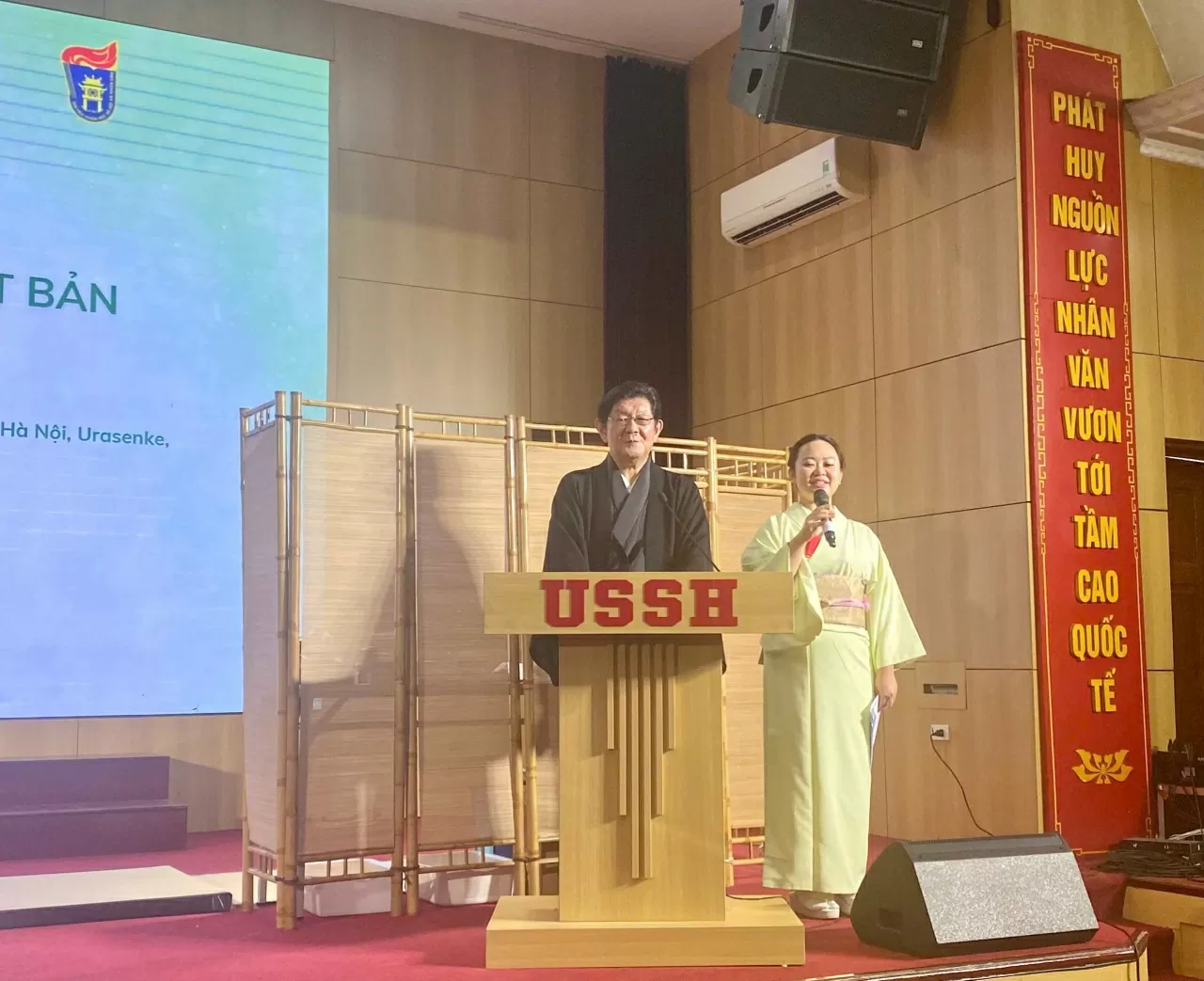 |
| Mr. Yamakawa Kaoru, representative of the Urasenke tea sect in Hanoi, shares about Japanese tea culture. (Photo: Xuan Son) |
In terms of history, tea was introduced to Japan around the 8th century by Zen monks. From here, tea developed into an art form imbued with a philosophy of living in harmony, purity and spiritual connection. Japanese tea ceremony began to take shape clearly in the 15th-16th centuries with the contributions of famous tea masters such as Murata Juko, Takeno Joo and especially Sen no Rikyu, who is considered the "father" of tea ceremony. He perfected the philosophy and ritual of tea ceremony based on four basic principles: wa-kei-sei-jaku (harmony-respect-purity-tranquility).
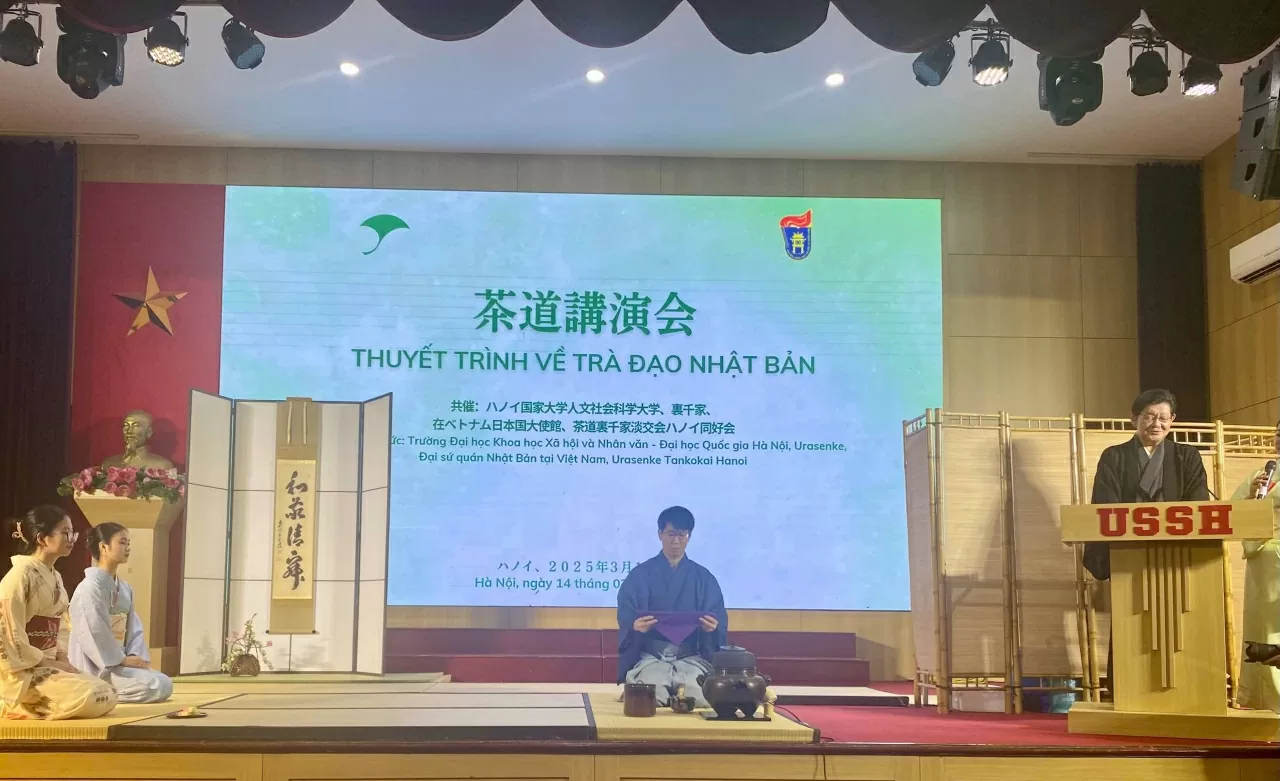 |
| Traditional tea ceremony performance by tea masters from Kyoto (Japan) and students from the University of Social Sciences and Humanities. (Photo: Xuan Son) |
Source: https://baoquocte.vn/uye-n-chuye-n-tinh-tha-n-ho-a-kinh-thanh-tinh-trong-van-hoa-tra-dao-nhat-ba-n-307622.html


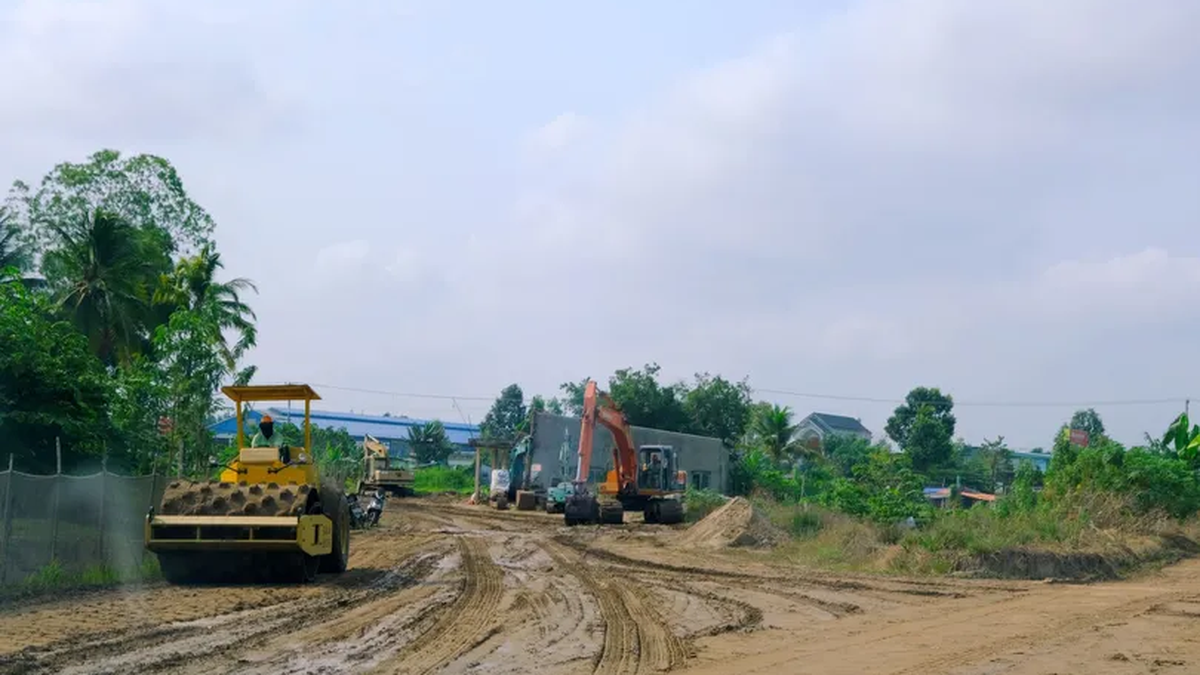





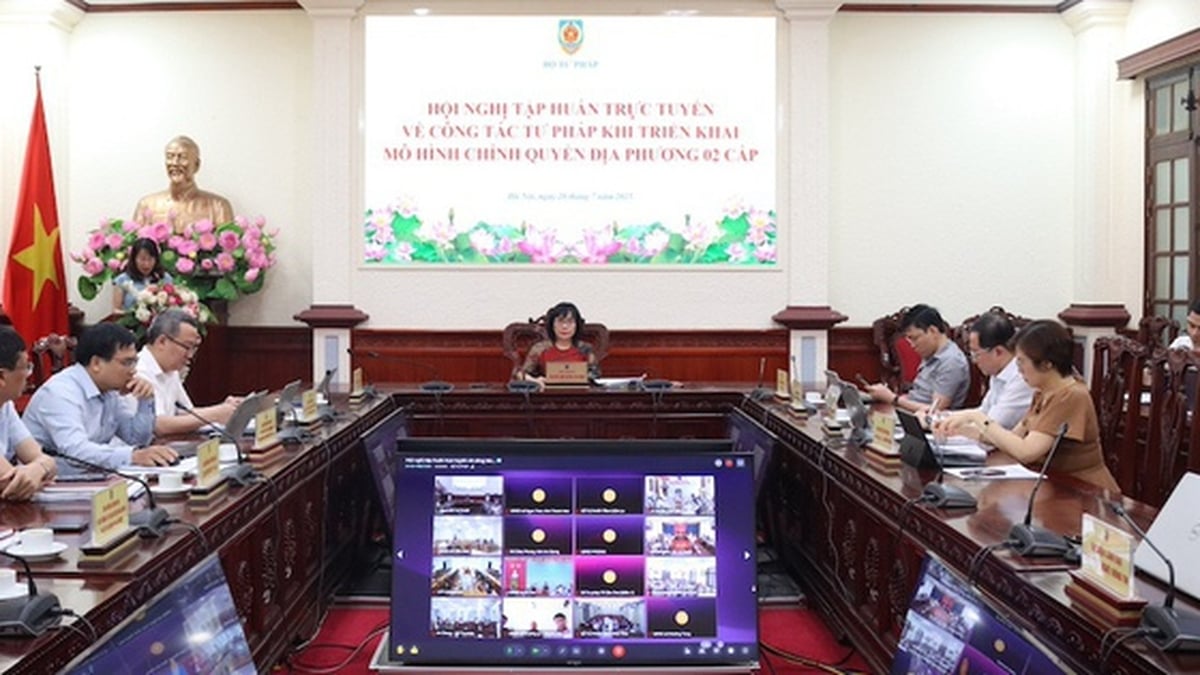
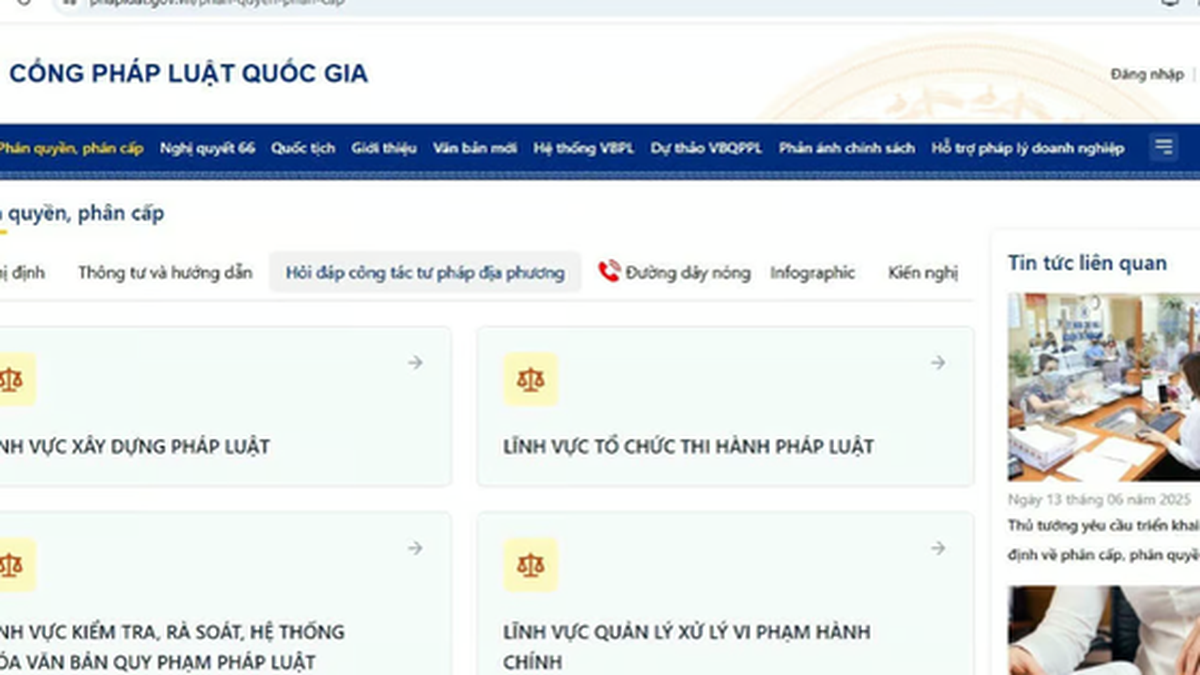
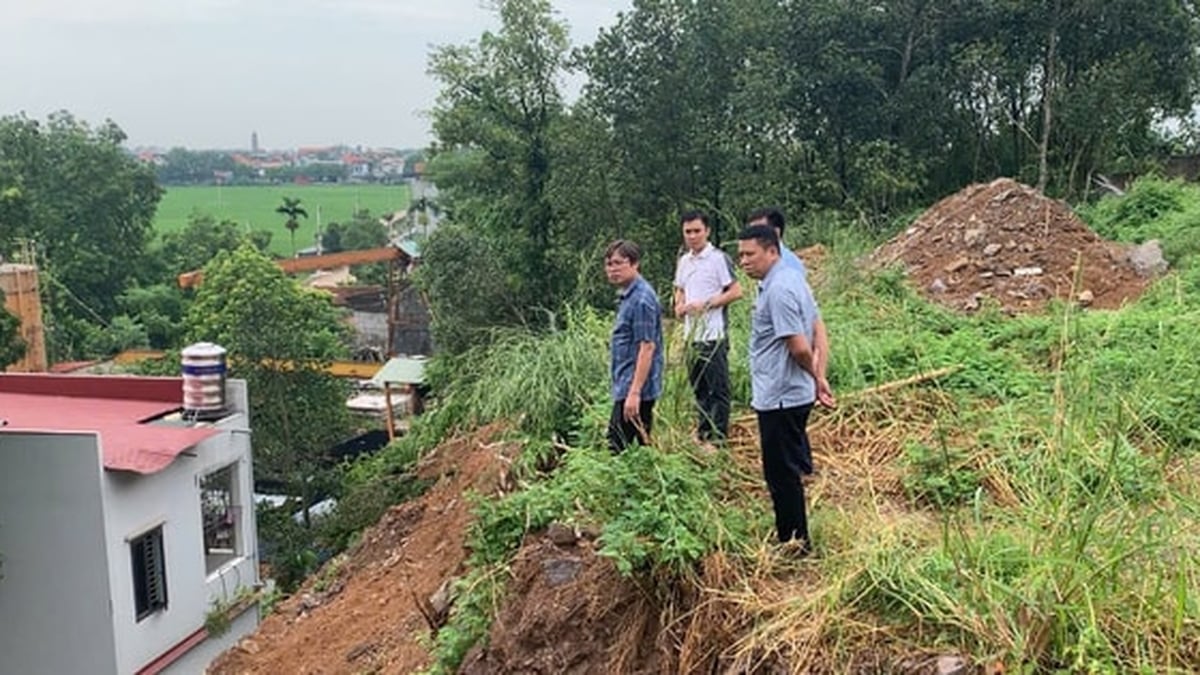
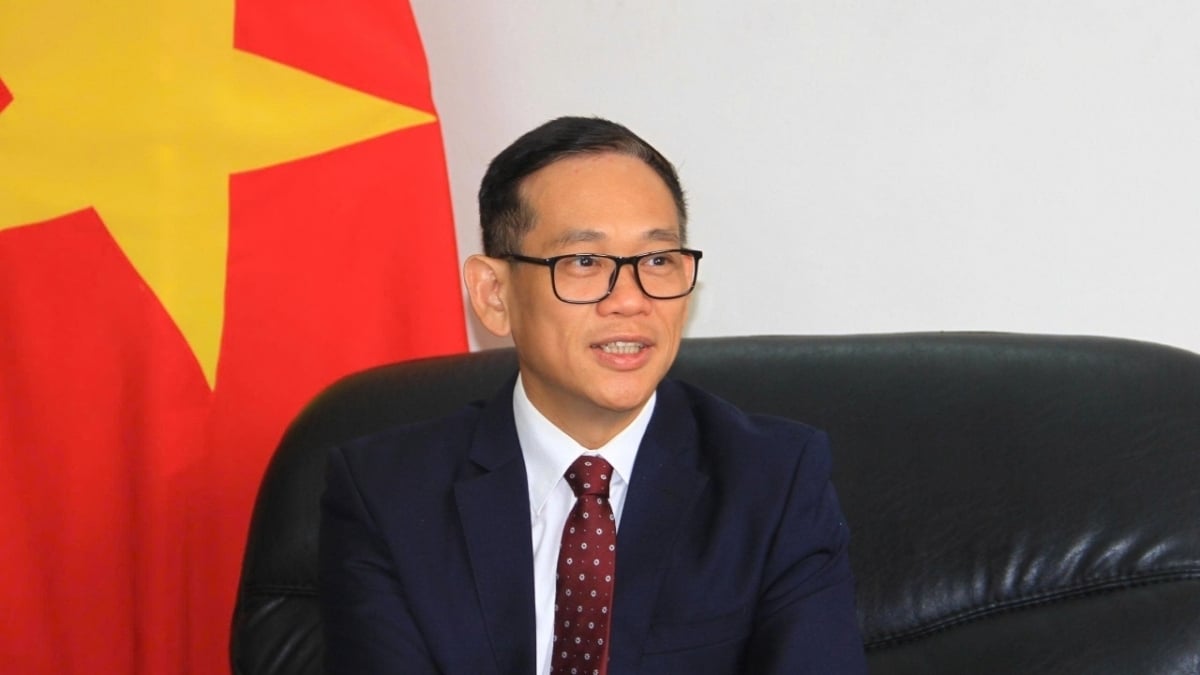














![[Photo] National Assembly Chairman Tran Thanh Man visits Vietnamese Heroic Mother Ta Thi Tran](https://vphoto.vietnam.vn/thumb/1200x675/vietnam/resource/IMAGE/2025/7/20/765c0bd057dd44ad83ab89fe0255b783)






































































Comment (0)